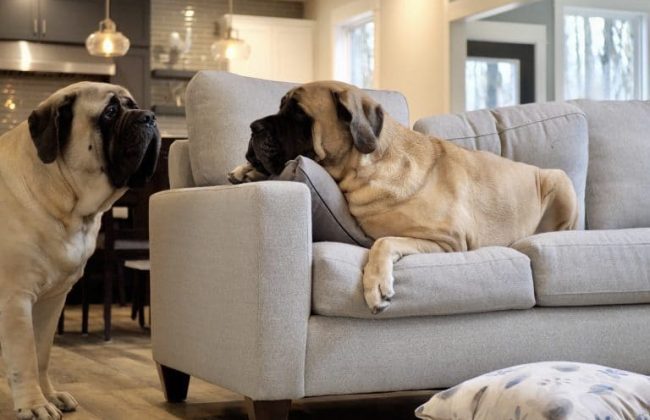There are so many excellent reasons to bring a dog into your life (and therefore your home), and it’s something that a lot of people definitely want to do. Yes, it means making some changes and potentially some sacrifices, and yes, it means changing the way you live your life in some respects (you’ll have to become more active for one thing because dogs need to be walked and played with), but the idea of having a constant canine companion who will be there for you no matter what and who can become a part of your family is certainly something that appeals to many people. Dogs are very popular pets.
So what are your options? What’s going to work best for you? Some might choose to buy a brand-new puppy whereas others are going to prefer to adopt, but whatever path you go down, you’ll need to have a good idea of the type of dog you want to bring home with you. When it comes to making that decision, the easier option is always going to be a smaller dog because they need less space and they’re easier to take for walks and so on, but the truth is that big dogs can be fantastic pets, and if you only look at small ones, you could be missing out on the perfect animal. With that in mind, let’s take a look at how to add a large dog to your home so you can at least consider the option and not immediately dismiss it. Read on to find out more.
Choose The Right Breed

Just saying you want to get a large, or at least larger (than average) dog into your home is one thing, but it’s not really enough to help you make the final decision. The fact is that you’ll need to narrow things down as much as possible so you can be completely sure you’re choosing well, and that means researching different large breeds rather than just lumping all big dogs into one category. They’re not all the same, and some take more care and attention than others, and they’re all going to need different things, so it’s well worth really digging down into the different types of large dogs you might come across.
Not only will you need to look into what each large dog is like in terms of their temperament, personality, how much they might shed, what their most common health problems are, how much they eat, and so on, but you’ll also need to think about your lifestyle. How much time do you have to dedicate to grooming or exercise, for example? Are you physically strong enough to safely take care of a big dog when you’re out in public?
By coming up with more information about both breeds and how you live, you’ll be able to work out a shortlist of large dog breeds that will suit you and your situation, and go from there.
Make A Safe Environment
The thing about large dogs is that they need a lot of room to move around in, and they’ll want to explore, so it’s not just about the amount of room they have – it’s about how safe it is as well. You’ll need to make sure your home is free from sharp objects, toxic plants, small items that a dog might be able to swallow (either intentionally or by accident – dogs won’t know the difference!), and so on.
Now it’s true that you’ll also need to make sure your home is a safe environment if you decide to go for a small dog, but remember that a small dog can’t reach the same level as a large dog can, and that means there’s more that can harm a large dog – they can get into more of your cabinets, or perhaps they can reach up to a table or kitchen counter where a small dog wouldn’t be able to. In that case, there’s more to think about when you’ve got a large dog coming into your home, and more safety measures to think about. Plus, you might need to invest in some sturdier furniture – a big dog could get hurt if your chairs and other items are only flimsy (and the furniture itself could break, so you’d have to replace it anyway – it might be better to do that through choice rather than necessity!).
The Exercise Question
All dogs need regular exercise if they’re going to be healthy and happy and live a long life – as far as possible, anyway. But smaller dogs won’t need hours and hours of exercise – they’ve only got little legs and they just don’t need to go out quite so much; their energy levels soon run out. Big dogs, on the other hand, need lots of exercise; they’re larger, so they have more energy, and that needs to be used up, plus there’s simply more of them so they need to exercise to prevent becoming overweight.
When you’ve got a big dog, you’ll need to ensure you can fit in daily walks (and we do mean walks, as in more than one) and plenty of play sessions to keep them entertained and burn off excess energy. Things like taking them hiking, swimming, or even trying out agility training can be ideal, but that’s going to take up a decent amount of your time, and you’ll need to make sure you can fit it into your schedule. If you work long hours or you’re not physically fit enough to go with your dog on their walks, you might need another plan – a smaller dog might work better, or you could employ someone to walk your dog for you, in which case, you’ll need to factor the cost into your budget.
One thing that can help if you’re busy and your dog needs some exercise is to install big dog doors sliding glass doors in your back door or patio doors, for example. In that way, your dog can enter and exit however and whenever they want to, ensuring they can get outside even if you’re not there to supervise. That makes toilet training a lot easier, but it also means they can play by themselves and get some exercise. You shouldn’t just let them out in the yard and be done with it when it comes to exercise, you will still need to do longer walks, but it’s a good compromise for busy people who want a larger dog.
Feeding And Nutrition
As you might have guessed, larger dogs have different needs when it comes to their food and nutrition than smaller dogs – they need more of it, for one thing, but they also have different needs when it comes to their nutrition; they’ll need to build up more energy, for example, so their bodies can be healthy.
That’s why you need to research your dog’s food thoroughly before you choose what type and brand to give them. You’ll want to get high-quality dog food that’s formulated specifically for large breeds to help them grow well and support their healthy development. However, you’ll also need to monitor your dog’s weight and make sure you adjust their feeding portions if you need to to prevent them from becoming overweight, as that can lead to various health issues. Plus, you’ll need to make sure your dog has access to fresh water at all times and avoid feeding them table scraps or human food as it could be harmful to their health – dogs can’t digest the same things we can.
Grooming And Hygiene

Regular grooming is essential for keeping your dog’s coat looking good and keeping up with their overall hygiene, and depending on the breed, you might even have to groom your dog every day to prevent their fur from matting and to reduce shedding (that’s not always easy, and no matter what size of dog you decide to have, you’ll need to be prepared for a lot of fur to be left all over your home and belongings).
Here is an important point to bear in mind; even if brushing your dog every day isn’t too much of an issue, there will be times when you have to bathe and shampoo them to keep their skin clean and reduce irritation. Will you be able to do that? If you intend to use your bathtub and the dog is a large one, can you lift them in and out without hurting your back? Can you do it without slipping, which could hurt you and the dog? If not, that could be a sign that a large dog isn’t the right choice for you, but if you intend to bathe your dog in the yard with a hosepipe, for example, that’s a (potentially) different story. These are the kinds of things that are so easy to ignore or not even realize are an issue, but they’re also the kinds of things that can help you and your dog live happily together, so you need to consider every element.

